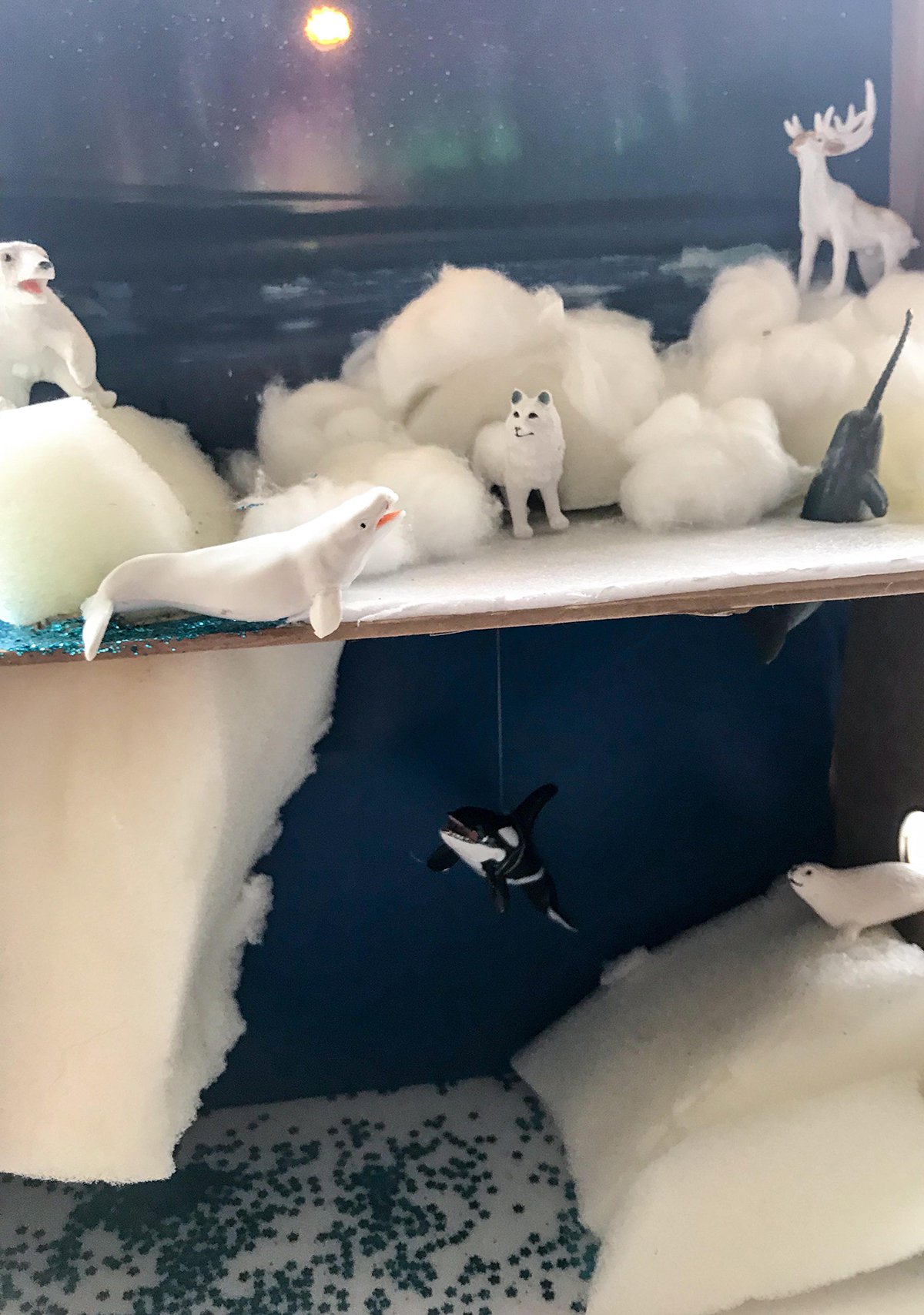
Cast your mind back, back to the time you learned things that left you wide-eyed and awestruck. When you were learning about the Earth you live in for the first time. You were probably a lot smaller then you are now, likely less tired(?!), but with a fresh young brain that soaked up information like a sponge. If you were learning about habitats at this time, you may have been tasked to create a Diorama Habitat. This was one of the very first memories I had of doing crafts at school. We had to create a jungle habitat and I still remember to this day what it looked like. That is a powerful example of how using arts and crafts for learning can stand the test of time.
Have I lost you? Ok, let’s start from the beginning.
What is a Diorama?
It is a three-dimensional tool for creative learning.
Originally it comes from the 19th century where it describes a mobile theatre device. Credit is given to Louis Jacques-Mande Daguerre. Louis was a French entrepreneur of sorts; a scenic painter, physicist and inventor (what a fantastic mix!). In 1822, with a coworker by the name of Charles Marie Bouton, held an exhibition in Paris that was titled, ‘Diorama’. The techniques that were used in this exhibition are still used today in museums to help capture a subject in any scale.
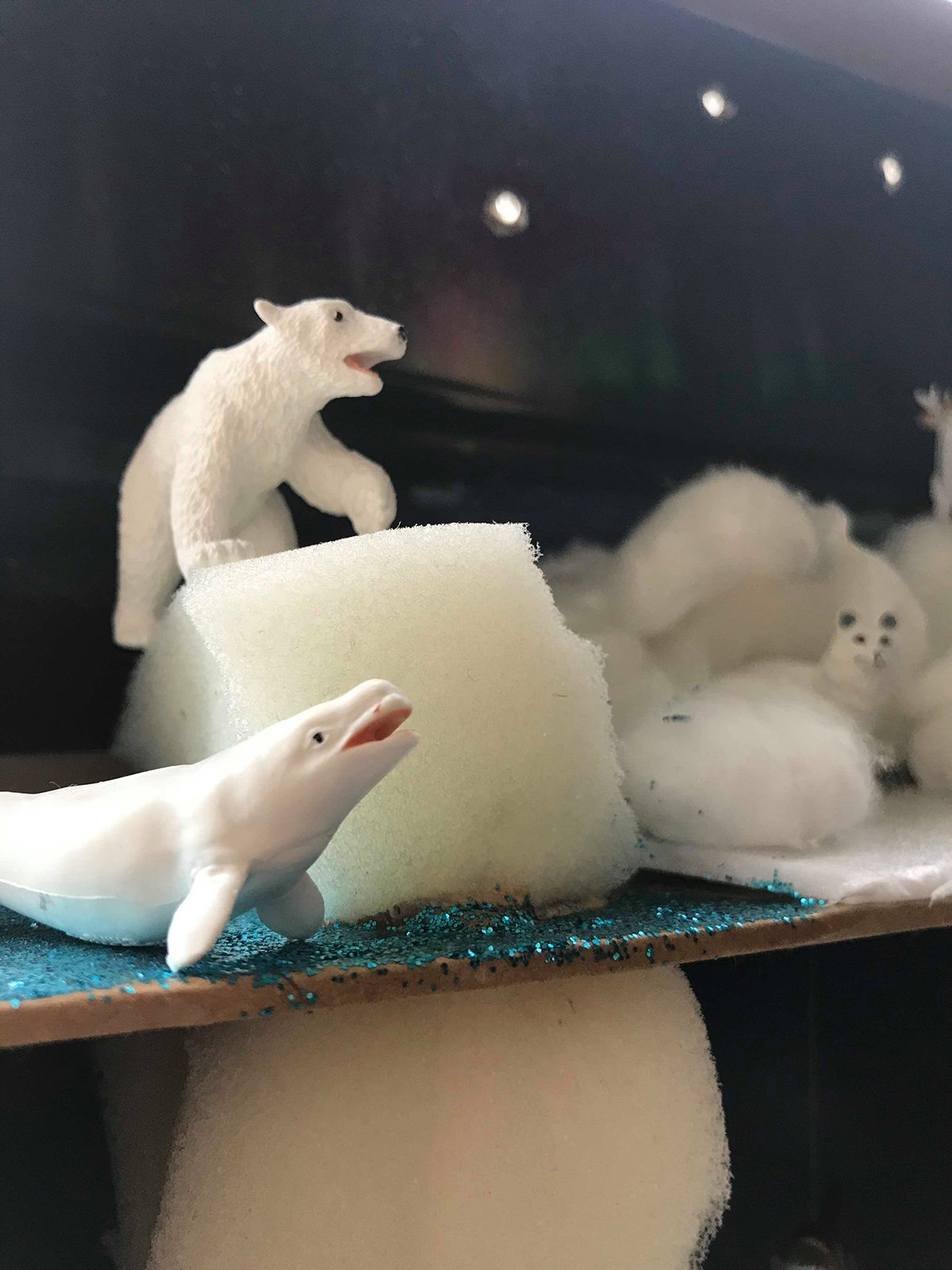
How does this relate to children?
Creating a diorama with children is a great learning tool to put into practice the child’s understanding of a topic that they have been studying. In most cases, you use a shoe box to be your ‘stage’ and you recreate whatever is relevant to your topic on your stage. It is a fantastic way to put into practice, especially if you are learning about habitats. Using a shoe box helps with limiting the size to a realistic, manageable and contained space.
If you live in the Northern Hemisphere then seasonally we are heading to winter, so we will be focusing on Polar Habitats, specifically the Arctic. This learning tool is a great way to get your child thinking about the Earth we live on – the different habitats and animals that live on it and how we can try and help protect it.
Polar Habitats
Earth has two Polar habitats, one at the top and one at the bottom. The Arctic, or North Pole, is at the top and the Antarctica, or South Pole is at the bottom. Both are covered with snow and ice, are cold and windy with little to no vegetation. The Earth is tilted and it is the movement of this tilt that produces seasons for us. Being the top and tail of the Earth, however, the Poles only receive Winter and Summer (6 months each). In Summer they are often basked in 24 hours of sun with no nightfall, whereas in Winter 24 hours of darkness. Temperatures in the Arctic can go as low and -50 °C and in the Antarctica -89°C! Brrrr, now that is cold!
They are described as Tundra ecosystems. Tundra comes from a Finnish word, tunturia which means ‘treeless plain’. The Tundra is always frozen, or rather there is always an under frozen layer called permafrost. This means that in Summer even though the top layer might thaw and produce wildflowers, trees cannot burrow their roots underground and therefore there aren’t any.
The animals that live there have adapted to survive meaning they have very thick fur or heavy thick feathers to keep warm. They are carnivores (eat meat) and don’t rely on vegetation, they also live in carved out ice caves or burrows under the snow and hibernate (go to sleep for a long time) in the coldest parts of the year.
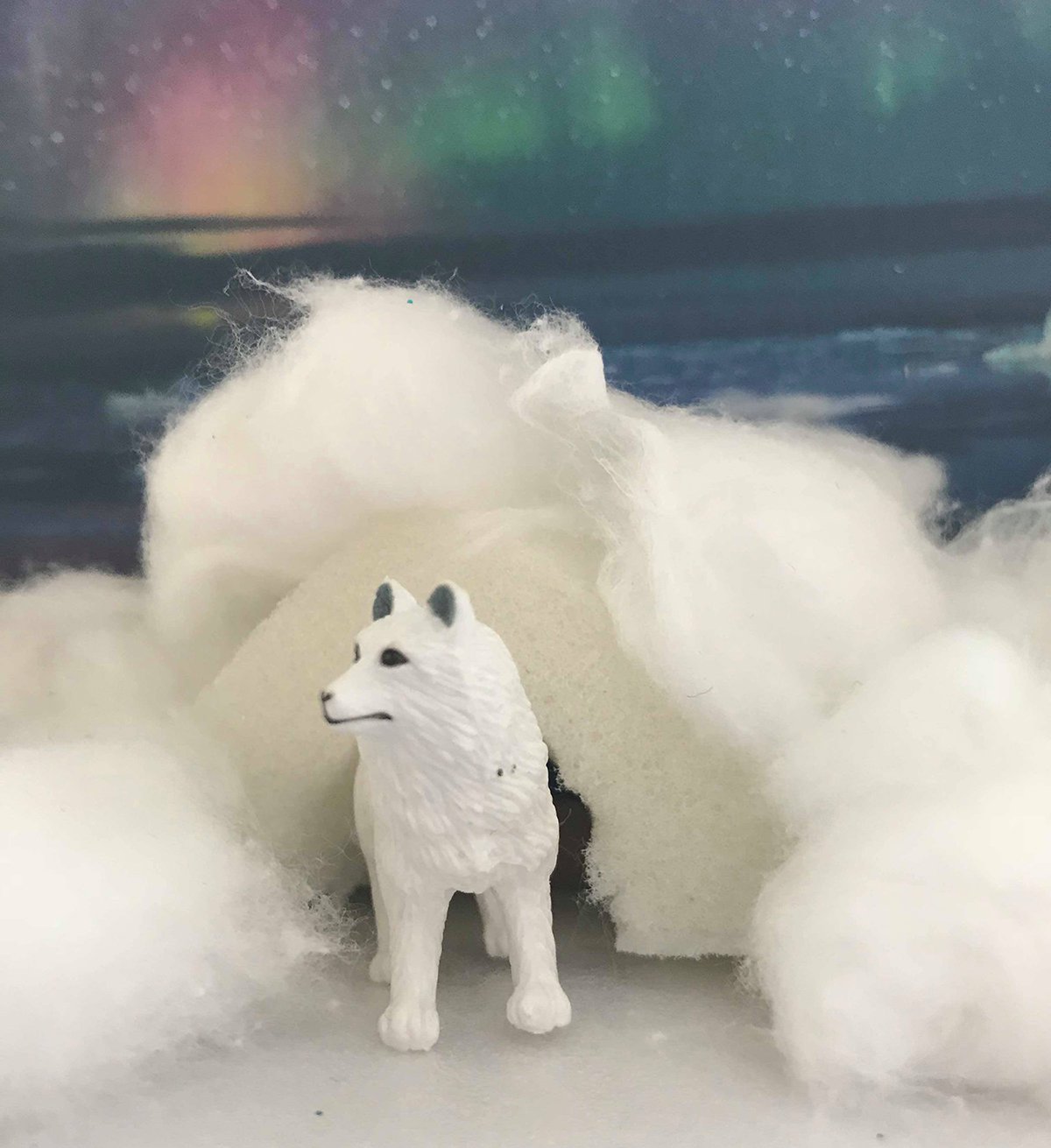
Facts about the Arctic
- The word ‘Arctic’ comes from the Greek, ‘Arktos’ which means bear. This is not a nod to polar bears, rather it is thought to be because of two-star constellations that can be seen in the northern sky. The ‘Ursa Major’, Great Bear and the ‘Ursa Minor’, Little Bear. This contains Polaris in it which is known as the North Star.
- The Arctic includes parts of 8 countries; Canada, USA, Iceland, Norway, Sweden, Finland, Greenland and Russia.
- There are no penguins in the Arctic. Instead, there are polar bears, Ox, Reindeer, Arctic Fox, Narwhal, Walrus, Orca, Wolf, Seal, Snowy Owl, Beluga Whales and even some insects.
- Despite the freezing temperature, over 4 million people call it home. Some of them are an indigenous people called, ‘Inuits’. They have also adapted to survive in this climate.
- Global warming is causing the ice in the Arctic to melt and as a result animals like the Polar Bear and Arctic fox are becoming endangered species.
- It is almost completely covered by water, most of which is frozen. Glaciers and icebergs scatter the landscape. These ice features are actually frozen freshwater.
- 10% of the entire world’s freshwater is located in the ice of the Arctic.
- In Arctic summer you can often see the sun at midnight. This has been named the ‘Midnight Sun’.
- In Arctic winter the opposite is true, ‘Polar Night’, is when none of the Sun can be seen on the horizon.
- No one owns the (Geographic) North Pole and it has no land to it, it lies in the middle of the Arctic Ocean with going sea ice (sea made of ice).
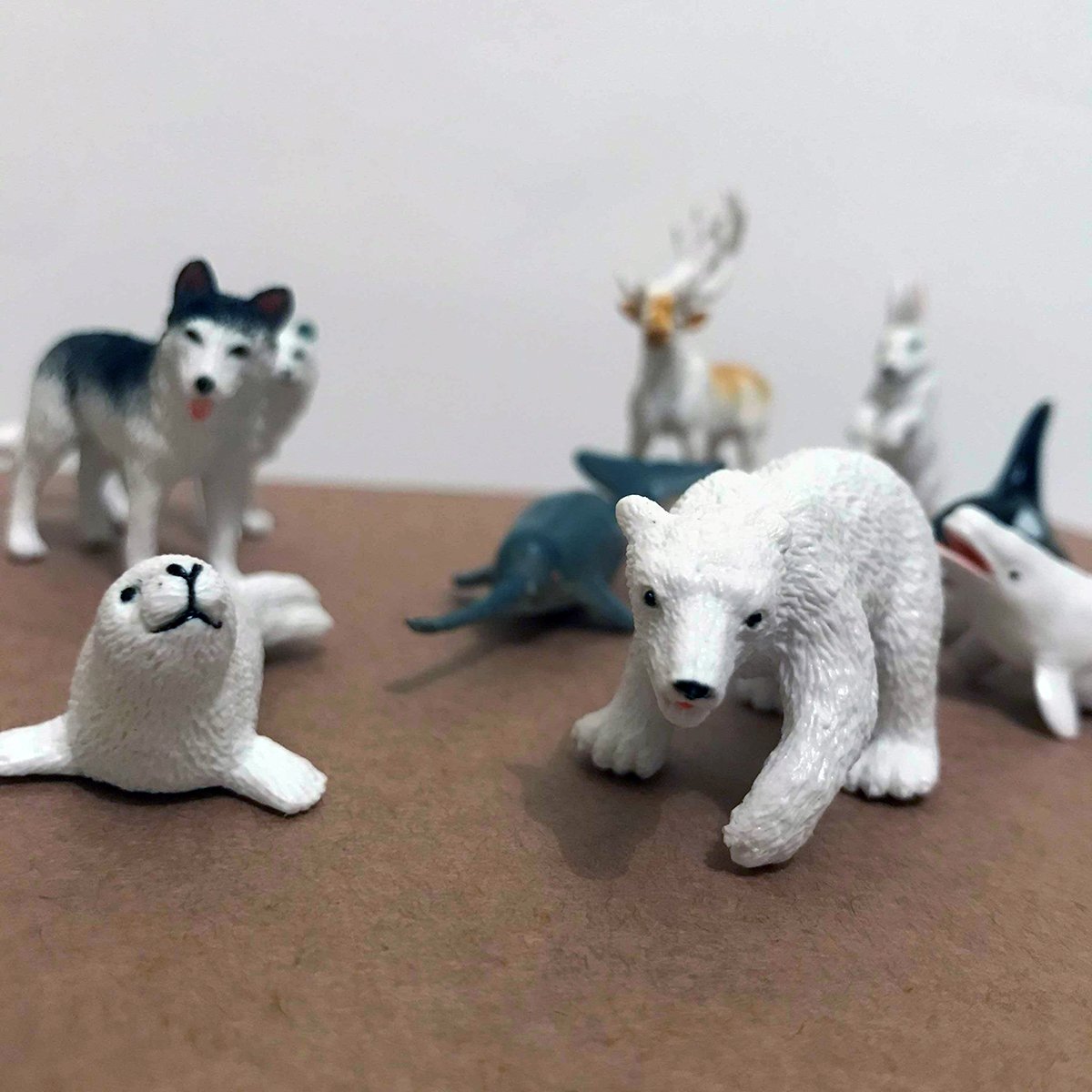
Making a Polar Habitat Diorama
Some ideas of items you can use to create your Arctic Diorama once you have your shoebox:
- Little polar toy animals / if you don’t have any why not make some with some air drying clay/ print some little images of arctic animals out and stick them in place/ lego animals etc
- Cotton wool/pads
- Glue
- Blue water beads
- Blue glue
- Blue glitter
- Marshmallows
- Styrofoam (varying thicknesses)
- Bubblewrap
- Coloured paper
- Printable skyscape
- White paint or spray
- Fairy lights
- Paint
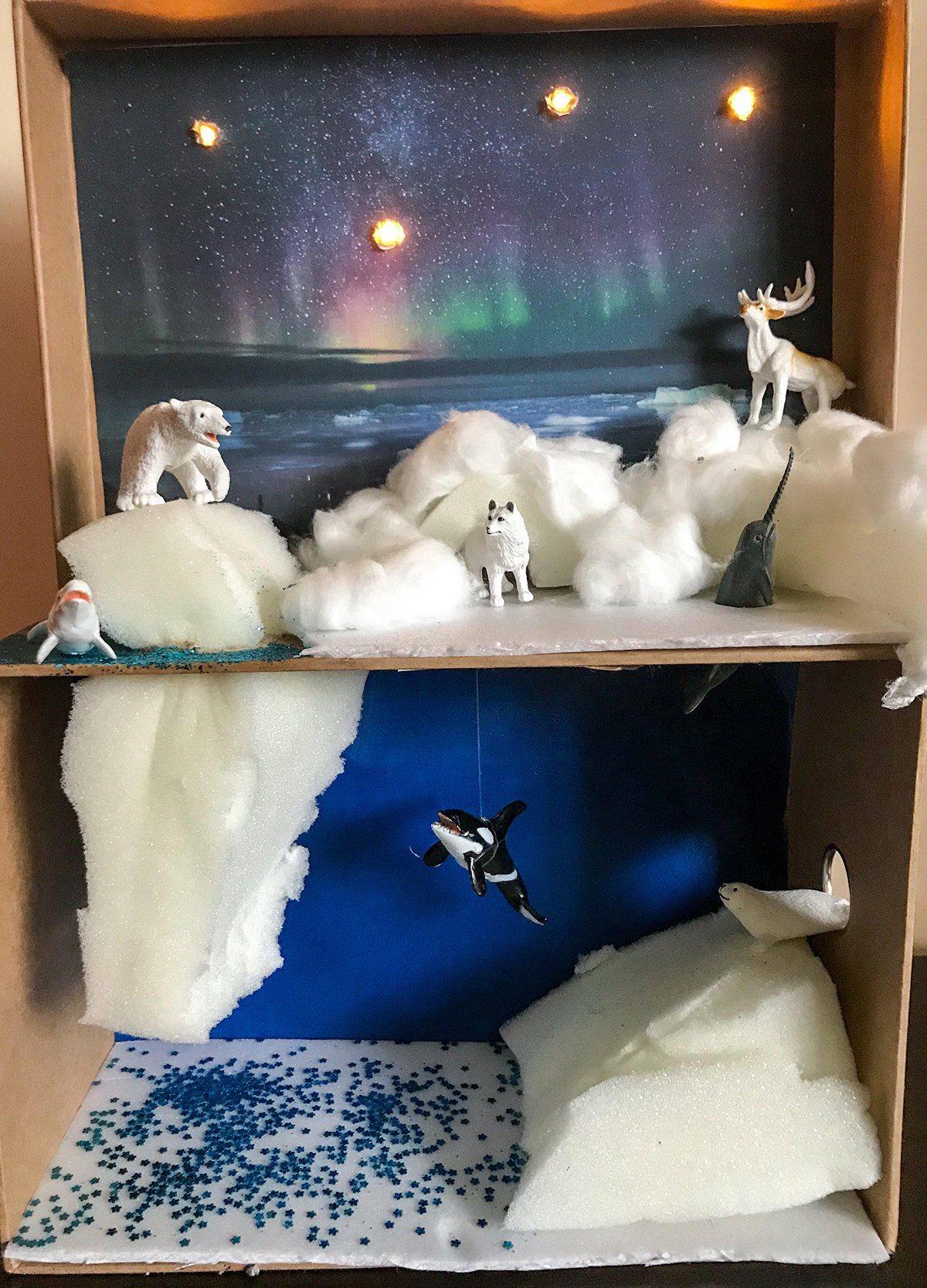
How to make your Shoe Box:
There is no set way to create your habitat in your shoe box. We utilized both the lid and the main part as we wanted to show both above ground and under the ice too. By doing this we could show how much wildlife lives both on land and the sea in the Arctic. Another alternative is to have the deep part of the shoe box stood horizontally and the lid flat on the surface. This would give lots of room to do an Arctic tundra scene with all the land animals.
For our horizon, we went on to Google images to find a night sky scene from the Arctic. This is a super simple way of bringing your habitat to life. As we chose an image with stars in it we decided to make holes in the sky to make space to put in fairy lights that we could turn on. We think that it adds a little magic to our Polar Habitat, especially as we used blue glitter to represent the icy water. The fairy lights help the glitter to twinkle! Alternatively, you can always draw a scene out and paint it.
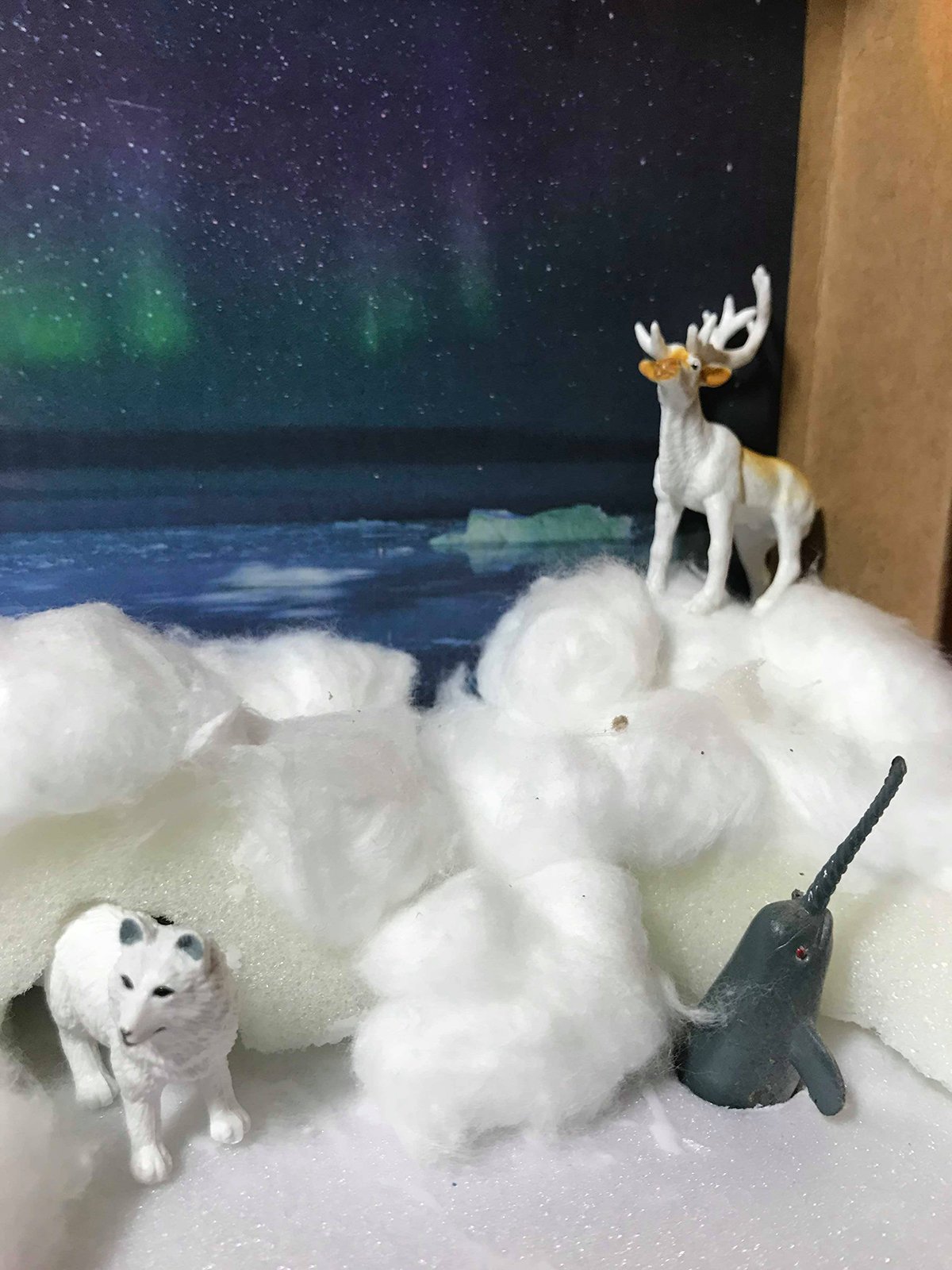
Safety Warning:
If you want to add an iceberg or a hole in the ice for Narwhal’s like we did, you will have to use a sharp pair of scissors or craft knife. Please do not let your child do this part, some shoe boxes can be difficult to cut through.
Once those holes are cut, pull the foam through them and place a polar bear on top of it. Even though Polar Bears can swim the really rely on floating ice like this to get around.
We used a PVA-type of glue for sticking everything down. We first layered thin styrofoam down for the ground and built up icy areas with foam. On top of the foam we glued on cotton balls to give the illusion of fresh snow. We even burrowed out a hole in the foam for an Arctic fox to keep warm in.
Now it’s your turn! We can’t wait to see what all your creations will look like. Don’t forget to tag us on social media so we can share your images with all our readers!
Don’t forget to follow us on Twitter, Instagram, Pinterest, and Facebook!
 Contributor
Contributor
Grace Selous Bull is an arts education author and freelance blogger. Her book, ‘Potty About Pots: arts and crafts for home and school’ is aimed at children from 5-12 years old and takes them through a journey of ceramics through time. She is a full time Mummy of two girls, both of whom love being creative, and is married to her husband, Andrew, who does not.
Original content © 2018 Super Simple. Not to be reprinted without express written permission. Terms of Service.

